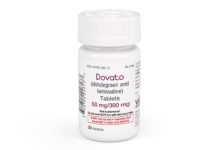HIV-positive U.S. residents in the large NA-ACCORD cohort had an atherosclerotic myocardial infarction (MI) rate 20% higher than people in a U.S. general-population cohort, newly published data reveal. This 29,169-person analysis also linked MI risk to lower CD4 count, higher viral load and a host of classic cardiovascular risk factors.
People with HIV infection run a higher risk of cardiovascular disease than does the general population. The high prevalence of smoking in HIV populations partly explains this risk, but increasing attention focuses on the impact of inflammation and immune activation that persist despite suppressive antiretroviral therapy. Previous studies of MI in people with HIV often did not validate MI events or distinguish between atherosclerotic type 1 MIs (T1MIs) and type 2 MIs related to imbalanced oxygen supply and demand.
To address these shortcomings, U.S. investigators conducted this study using centralized MI ascertainment, adjudication and classification in NA-ACCORD, the largest and most diverse HIV cohort in North America. NA-ACCORD includes more than 150,000 HIV-positive people 18 years old or older at more than 200 sites across the U.S. and Canada. This analysis assessed T1MI incidence in 29,169 cohort members at seven U.S. sites who enrolled by January 1995 and had follow-up through March 2014. Researchers compared T1MI incidence in this group with incidence in a diverse contemporaneous U.S. general-population group, the Atherosclerosis Risk in Communities (ARIC) cohort. They used Poisson regression to calculate T1MI incidence rates and adjusted incidence rate ratios (aIRRs) for MI risk factors, and they compared aIRRs in NA-ACCORD and ARIC.
Through a median follow-up of 3.2 years, 29,169 people with HIV had 335 T1MIs for a crude incidence of 2.57 per 1000 person-years. Multivariate analysis identified several independent predictors of T1MI in NA-ACCORD: older age, white versus black race, smoking, hypertension, diabetes, statin-treated dyslipidemia, chronic kidney disease and lower time-updated CD4 count. A CD4 count below 100 versus 500 cells/mm3 or higher conferred more than a two-fold higher MI risk (aIRR 2.19, 95% confidence interval [CI] 1.44 to 3.33), an impact similar to that seen with hypertension or cigarette smoking. A CD4 count of 100 to 199 cells/mm3 conferred a 60% higher MI risk (aIRR 1.60, 95% CI 1.09 to 2.34). In an analysis excluding CD4 count, a viral load above versus below 400 copies/mL independently boosted MI risk (aIRR 1.36, 95% CI 1.06 to 1.75).
The 14,308 ARIC participants were at least 40 years old at baseline, recruited between 1987 and 1989 and had follow-up through 2010. During 281,284 person-years of follow-up, they had 1448 MIs. Compared with MI incidence in ARIC participants, incidence rates were higher in NA-ACCORD patients 40 to 49 years old, 50 to 59 years old and 60 or older.
Adjusted analysis determined that NA-ACCORD participants had about a 20% higher MI rate than ARIC participants (aIRR 1.21, 95% CI 1.02 to 1.45). Other factors independently associated with higher MI risk in this analysis were older age, male sex, nonblack race, smoking, hypertension, diabetes and elevated total cholesterol. Findings were similar in a sensitivity analysis excluding NA-ACCORD members younger than 40 years old.
In their published paper on this study, the NA-ACCORD team said they believe their results “provide further evidence of the benefit of HIV treatment to prevent not only AIDS-defining illnesses but also important HIV-associated chronic conditions including [atherosclerotic cardiovascular disease] that can occur regardless of CD4 count but are more common among individuals with lower CD4 counts.” The researchers note that their findings are consistent with results of the SMART trial, which found a lower cardiovascular event rate in people randomized to continuous versus delayed or interrupted antiretroviral therapy.
Because they compared MI rates in a large and diverse HIV cohort and a well-characterized general-population group, the authors suggest they showed “with broad generalizability that HIV infection is independently associated with MI risk[.]”
Mark Mascolini writes about HIV infection.


 ПОИСК ПО САЙТУ
ПОИСК ПО САЙТУ  поиск по ресурсному центру
поиск по ресурсному центру 



